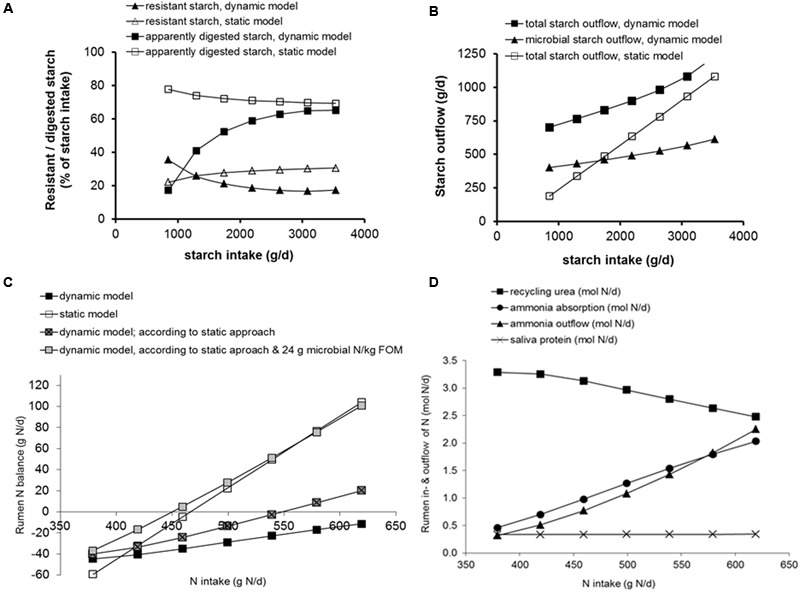FIGURE 4.

Effect of substitution of maize silage for grass silage (up to 70%) in a diet containing 80% roughages and 20% concentrates on a DM basis, assuming a DM intake of 20 kg DM/d, simulated by the model of Dijkstra et al. (1992) as well as by a current protein evaluation systems (Van Duinkerken et al., 2011), as examples of a dynamic and a static rumen model, respectively (results derived from Bannink et al., 2006a). (A) Resistant or apparently digested starch as % of starch intake simulated with the dynamic and the static rumen model. (B) Rumen outflow of microbial starch (microbial polysaccharides synthesized, and starch engulfed by micro-organisms) and total starch simulated with the dynamic and the static rumen model. (C) Rumen nitrogen balance simulated with the dynamic and the static rumen model, with the dynamic rumen model for the concept of rumen protein balance represented in the static model, and with the dynamic rumen model for the concept of rumen protein balance represented in the static model with a constant 24 g microbial N synthesized per kg rumen fermented OM (FOM) as assumed in the static model. (D) Simulation results for N flows to and from the rumen compartment with the dynamic rumen model (urea recycling, ammonia outflow, ammonia absorption, and saliva protein inflow). These flows as such are not represented in the static model.
